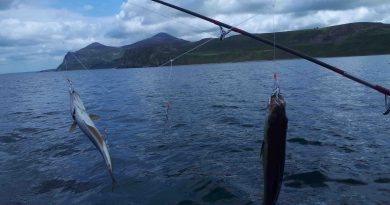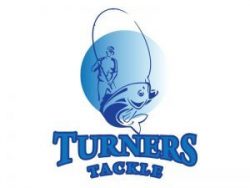Bass
The Sea Bass (Dicentrarchus labrax), a creature of elegance and strength, graces the coastal waters of the United Kingdom, drawing anglers into the excitement of the chase. As a prized catch for both recreational and professional fishermen, the sea bass holds a special place in the maritime allure. In this article, we will embark on a journey to explore the sea bass’s habitat, its preferred prey, and the distinctive characteristics that make it a captivating species in the waters surrounding the UK.
Habitat of the Sea Bass:
1. Coastal and Inshore Waters:
- The sea bass is an iconic inhabitant of coastal regions, favoring inshore waters with a mix of rocky structures, estuaries, sandy beaches, and submerged features. Its adaptability allows it to navigate a diverse range of coastal environments.
2. Rocky Shores and Structures:
- Rocky shores and submerged structures, such as wrecks, jetties, and piers, are favored habitats for sea bass. These areas provide both shelter and opportunities for ambushing prey, making them prime locations for anglers seeking this elusive species.
3. Estuaries and Tidal Flats:
- Estuaries and tidal flats serve as essential environments for juvenile sea bass. The nutrient-rich waters and diverse ecosystems in these areas offer a rich food supply, contributing to the growth and development of young bass.
4. Depth Preferences:
- Sea bass are known to inhabit a range of depths. While they can be found in shallow waters close to the shore, they also venture into deeper offshore areas, particularly during different stages of their life cycle.
5. Seasonal Movements:
- Sea bass exhibit seasonal movements influenced by factors such as water temperature and spawning activities. During the warmer months, they may move to shallower waters, while colder months might see them in deeper offshore locations.
Prey Preferences of the Sea Bass:
1. Small Fish:
- Sea bass are voracious predators, and their diet prominently features small fish such as sandeels, sprats, and juvenile mackerel. They use their speed and agility to chase down and capture these agile prey.
2. Crustaceans:
- Crustaceans, including crabs and shrimps, are significant components of the sea bass’s diet. Their powerful jaws and sharp teeth are well-suited for crushing the shells of these crustacean delicacies.
3. Mollusks and Cephalopods:
- Mollusks like squid and cuttlefish, as well as various cephalopods, are part of the sea bass’s diverse palate. Their adaptability to different prey types allows them to exploit a variety of available food sources.
4. Invertebrates:
- Sea bass also target a range of invertebrates, including worms and marine invertebrates. This adaptability in prey selection contributes to their success as opportunistic hunters.
Distinctive Traits of the Sea Bass:
Sea bass exhibit a wide range of sizes, with adults typically reaching lengths between 20 to 30 inches (50 to 75 centimeters). However, these dimensions can vary, and some individuals may grow even larger, particularly in more favorable conditions. Young sea bass, also known as juveniles, are significantly smaller and may measure just a few inches in length.
1. Sleek and Streamlined Body:
- The sea bass boasts a sleek and streamlined body, perfectly adapted for swift and agile movement through the water. This physique enables it to navigate intricate coastal structures with ease.
2. Silver and Dark Coloration:
- Sea bass exhibit a silver coloration on their sides, transitioning to darker shades on their upper body. This coloration aids in their camouflage and provides effective concealment in the diverse coastal environments they inhabit.
3. Spiky Dorsal Fin:
- One of the sea bass’s distinctive features is its spiky dorsal fin, which can be raised for defensive purposes. Anglers should handle sea bass with care to avoid injury from these sharp spines.
4. Territorial Behavior:
- Sea bass can display territorial behavior, especially during the breeding season. Anglers often capitalize on this behavior by targeting areas where sea bass defend their territories and construct nests.
5. Nocturnal Feeding Habits:
- Sea bass are known for their nocturnal feeding habits, becoming more active during low-light conditions. This behavior enhances their hunting success and adds an element of excitement to night fishing for sea bass.
Conservation Considerations:
Understanding the habitat preferences, prey choices, and unique traits of the sea bass is essential for its conservation. Anglers and enthusiasts can contribute to the protection of this species by:
- Practicing Catch-and-Release:
- Engaging in catch-and-release practices, especially for larger sea bass, ensures sustainable populations and allows individuals to contribute to the breeding stock.
- Adhering to Fishing Regulations:
- Following local fishing regulations, including size limits and seasonal restrictions, promotes responsible angling and supports the preservation of sea bass populations.
- Participating in Conservation Initiatives:
- Supporting and participating in conservation initiatives that focus on the protection of coastal habitats and the overall health of marine ecosystems benefits the sea bass and its associated biodiversity.
- Educating Fellow Anglers:
- Spreading awareness about responsible angling practices and the importance of conserving sea bass populations fosters a culture of sustainability among the angling community.
Gender Differences:
Sexual dimorphism is evident in sea bass, with notable differences between males and females. During the spawning season, which typically occurs in the spring and summer months, males undergo changes in coloration and develop tubercles or rough patches on their heads. These features are believed to play a role in courtship displays and territorial behavior.
Female sea bass, on the other hand, tend to be larger than males, a common characteristic in many fish species. This size difference is often more pronounced in older individuals.
Conclusion:
The sea bass, with its enigmatic nature and captivating characteristics, remains a beloved species among anglers exploring the coastal waters of the United Kingdom. By unraveling the secrets of its habitat, prey preferences, and unique traits, anglers deepen their connection to this remarkable fish. As we continue to pursue the sea bass along the UK shores, let us champion responsible angling practices and conservation efforts, ensuring the enduring presence of this iconic species for generations to come.



